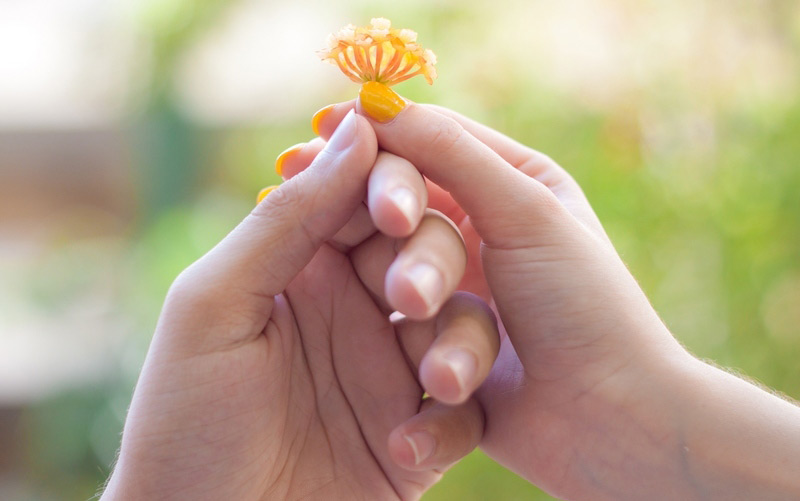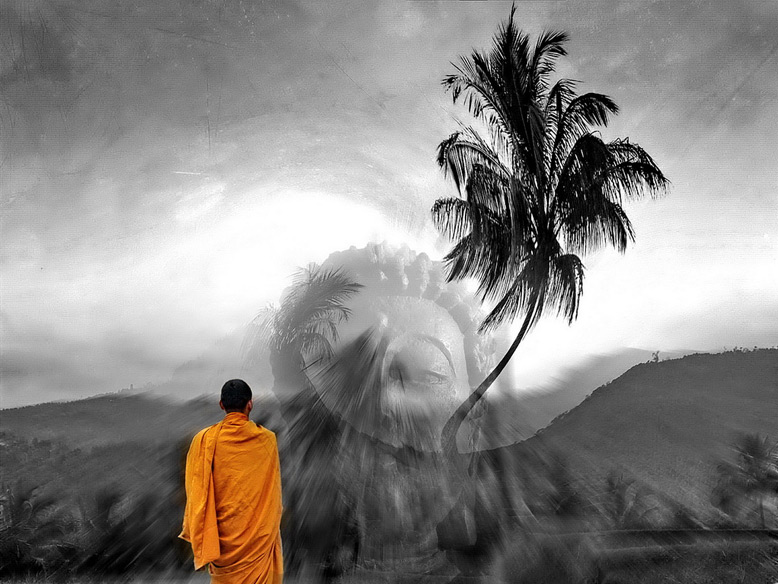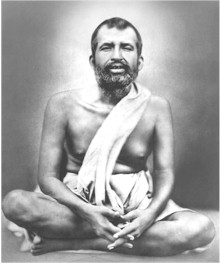

~ From a talk given by Rinpoche given at California Institute of Integral Studies on Nov. 16th , 2005 ~
Tonglen Meditation
There is another meditation called Tonglen, a method of working with breath and exchanging your happiness for the suffering of others.
To do this you can either visualize all beings in front of you or you can single out one person who is in great turmoil, a friend in the hospital or someone who is having difficulty or hardship, someone who is lonely or angry. You can visualize one or two people or you can visualize all of the people in Iraq or Africa.
Imagine that you are taking in everybody’s suffering and misery. Imagine this as black smoke and take it all in, especially when you inhale. Allow your self to feel this immense level of universal suffering and meditate on that. Allow yourself to feel the suffering of other people.
When you do this you experience that there is no longer any real separation or gap between yourself and others. You feel that you are one with everybody else. You are one with that person who is in turmoil. You are one with the people in Iraq who are suffering from fear because of war and lack of food.
You feel as well that you are one with the people of Africa who are hungry, dying from terminal illness or whose parents have been killed, or whose children have been abducted. You don’t feel a separation between those who are suffering and yourself even though you are externally living here in a beautiful place, almost an earthly paradise.
We are very fortunate to be able to live where we are sheltered from a lot of unfortunate situations—war, starvation. Most of us have food and shelter. We have quite a different life compared to most of the worlds’ population.
Therefore even though we are living in this beautiful paradise, we can at the same time, actually reach out to the hearts and minds of everybody all over the world and experience oneness with them And we can experience what they are going through.
There is a fear somewhere in the backburner of our minds that if we are so open hearted, so courageous that we completely embrace the suffering of other people then we will be depressed and that will spoil our good time. But that’s not true. When you allow yourself to embrace the suffering of other people it doesn’t make you depressed.
Whenever you embrace the suffering of other people you become more compassionate and less self-centered. You begin to worry less about your personal affairs. You begin breaking your attachment to your selfish mind, the ultimate cause of sorrow.
So in some sense you begin to experience spiritual bliss, spiritual ecstasy, and spiritual contentment when you allow yourself to embrace the immeasurable level of suffering of humanity and all living beings too.
When you exhale, imagine that you are sending out this beautiful bright pure pristine golden light and reflecting it on all living beings on earth, to each specific individual who is suffering who is in a situation of confusion, loneliness, physical pain. Imagine that you are sending all of your loving kindness, your happiness, all of your goodness.
Imagine that they have received all of your generosity and kindness. Imagine that they are free from sorrow and misery.
This is a very powerful meditation.
Compassion Sadhana
It is very necessary for us as spiritual practitioners to place a great emphasis on this idea of compassion or loving kindness in everyday life and we have to find a sadhana or practice to help us generate compassion.
Sadhana is a Sanskrit word that means basically a spiritual practice. Sadhana is widely practiced in both Hindu and Buddhist traditions. Sadhana is usually a meditation structure with specific stages involving visualization, chanting, mantra recitation and different types of yoga. But I’m talking about the idea that we also must practice compassion sadhanas in our everyday life.
The practice of compassion sadhana in daily life means that you have to make some sort of a commitment to practice the compassion sadhana lets say once, twice or three times every day.
In Tibetan Buddhism we practice the Avalokiteshvara sadhana in order to cultivate compassion and loving kindness. Sometimes meditators go on retreat for years and years, six years, nine years, ten years practicing only the Avalokiteshvara sadhana and meditating on loving kindness.
When I was growing up in my village I had neighbors, two older people in the house next door. They were uneducated. They had never been to the monastery. They were illiterate. They did not know how to read prayers. But they memorized some simple prayers of Avalokiteshvara and spent their entire lives reciting Om Mani Padme Hum, the mantra of Avalokiteshvara.
Many of the older people in Tibet don’t cut their fingernails and I remember that these two old people had long fingernails and they counted mala beads while reciting Om Mani Padme Hum and meditating on compassion. And the finger nails on their thumbs were worn down in the middle. It looked like there were two horns growing out of their thumb because the middle was completely worn down because of their compassion practice.
Whenever I was with them I felt joyous and happy. I wanted to dance and sing songs every time I was in their presence because there was a field of energetic loving kindness. So it is very good to practice a compassion sadhana. Maybe you can make a personal commitment to recite the prayers that I talked about three times every day and meditate carefully on all of the lines.
- The first line is called the meditation on love.
- The second line is called the meditation on compassion.
- The third line is called the meditation on the sympathetic joy.
- The fourth line is called the meditation on equanimity.
In the beginning it might be quite challenging to pick a specific time every day but after a while you will discover how joyous and liberating and fulfilling it is to practice compassion sadhana a few times every day.
If you don’t recite any prayers you can just think, “I love all beings”, or “May I have absolute loving kindness toward all beings” or “I forgive everyone. I forgive all those people who have hurt me and caused pain in my life.”
Or you can think “I love all beings” or ”I love all of you”. How about that? And that’s prayer too when you say I love all beings. And you can recite that prayer in your mind again and again, generating a mind of loving kindness.
It can be very powerful.
Read the third part of this talk here.
Resources for Further Reading
How Avalokiteshvara Attained Her 1000 Arms: Buddhist studies
The Teacher’s Guide to Sadhana: Yoga Journal
Photo by Hartwig HKD
About Tulku Thubten Rinpoche
Tulku Thubten Rinpoche was born in Tibet and took up spiritual training in the Nyingma lineage of Tibetan Buddhism at an early age. He was recognized as the incarnation of Anam Lama by several masters, including Gompa Tulku Rinpoche. Rinpoche came to the West in 1992, and teaches in fluent English.







